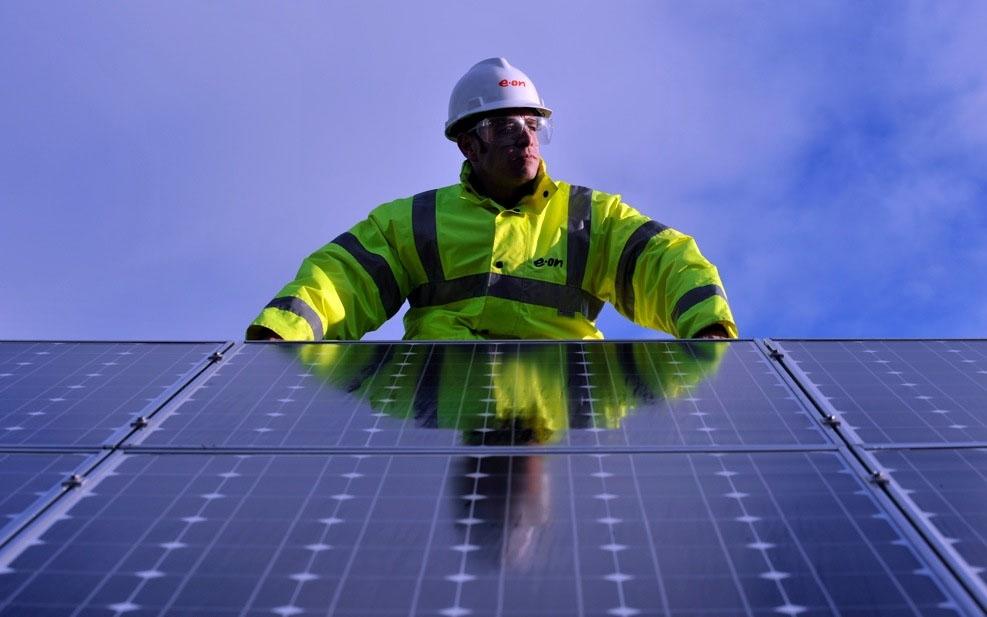There are two types of brands in the world: the ones you want, like Apple, Lego and Nike – whose customers would jump at the chance to work with them on designing their new product range – and then there’s the ones you need, like energy providers. Pick one and pay them for their services – that’s pretty much the depth of most customers’ relationships with them.
But now more than ever, energy providers need their customers to be engaged with energy issues. The desperate search for economic green shoots might have forced the topic of green energy from the front pages, but it remains a pressing concern.
In 2010, energy firm E.ON launched a new division, E.ON Innovation, which would be at the heart of the company’s new products and services offering. Innovation executive Claire Gilby explained that the firm “wanted to help customers save money and have a positive effect on the environment” at the same time, so gathering opinion and input from those who would eventually be using the new products was a must.
“Customers are at the heart of everything we do,” Gilby says, “so customer collaboration is a no-brainer. There is nobody better-placed to know what our customers need and want than the customers themselves.”
Part of the process
E.ON set out to make customers part of the innovation process through a collaboration with co-creation specialists 100%Open. E.ON had already run an online research panel of customers which it used to carry out traditional surveys, and from this the company selected what it describes as the most “creative and entrepreneurial” respondents to take part in a new co-creation community.
“Customers are at the heart of everything we do, so customer collaboration is a no-brainer. There is nobody better-placed to know what our customers need than the customers themselves”
The first project set for the community was called Power to the People, and its aim was to get customers thinking about what new energy products and services they would like to see. Gilby says that after a flurry of debates and suggestions it became clear that homeowners were interested in “more affordable solar energy options”. The result was the E.ON Solar Exchange scheme, which allowed customers to have solar panels fitted for only £99 as part of a so-called ‘rent a roof’ scheme.
Power to the People was followed by a similar project that looked at the available options for charging electric vehicles and how and where the existing options could be improved.
Gilby admits to being surprised at the level of engagement customers showed in participating in the projects. Some community members would spend “hours” a night debating ideas with other members and suggesting new products for E.ON, she says.
“It’s been quite astonishing really,” says Gilby. “We were geared up to receive all kinds of complaints and have people just talking about prices. But we did a trawl of the community and found nothing of the sort. It was all very focused – and a real surprise.”
100%Open co-founder Roland Harwood says: “E.ON thought their customers didn’t care about the product and thought it was all down to price. What we quickly realised is that a lot of people are very passionate about green issues and really, really want to talk to energy companies but find it very hard to do so. The fact that E.ON actually wanted to engage them was really radical to them.”
Tomorrow’s world
With solar panels and electric vehicle charging out the way, E.ON’s innovation team kicked off its biggest and highest-profile project yet.
Home of the Future formed the basis of a five-part Channel 4 series, shown earlier this year, which followed a family from Sheffield as they moved temporarily into a house filled with the latest energy-saving technology and devices, such as waterless washing machines, domestic power stations and sustainable food options.
While the show aired, community members were asked to discuss related issues. They could also submit ideas for products and services to E.ON. Unlike past projects, however, the community was opened up to members of the public who were not existing E.ON customers or members of its research panel.
Once again, the response was extremely positive, says Harwood, with some members visiting and contributing to debates each day.
“They were motivated by the chance to influence, even in a very small way, the strategy and the future direction of a big company like E.ON,” he says. “They are green pioneers, if you will.”
Success wasn’t assured from the start, though. Gilby says that from E.ON’s perspective, the Home of the Future was a “massive” undertaking that required “lots of planning and preparation”. They looked at similar projects that had failed in the past to learn what not to do when the programme went live. The biggest mistake E.ON could make was to not be visible. It couldn’t come off as being “a tick-box exercise”, Gilby says, so a team of 80 were on hand to make sure that the firm was always seen to be contributing to the discussion.
Harvesting moonbeams
As the community buzzed with debate about the TV programme and energy issues in general, there was also a steady stream of ideas – more than 1,600 of them – filtering through to E.ON.
The firm had committed to picking the best idea and running full R&D on it, while the four runners-up would receive home energy makeovers worth £2,000 a piece.
Eventually, the winning idea was for a series of smart sensors to be fitted to the homes of elderly or vulnerable people which could detect unusual patterns of energy use that might suggest a problem, and then notify family members or care workers. For example, if a person switched their kettle on at roughly the same time every day this energy use pattern would be logged. If that pattern failed to occur on a given day, the system would trigger an alert.
Out of 1,600 ideas, Harwood admits that some of them were plain “mad”. “There were definitely a few bonkers suggestions in there that were not taken forward, but the community quickly separates the viable ideas from the non-viable ones,” he says.
A similar mix of the practical and the bizarre occurred during the original Power to the People project, where one member suggested “harvesting solar moonbeams” as an energy source. Gilby, however, is not so quick to throw out some of the more ‘creative’ ideas that community members come up with. “It’s all part of the innovation process,” she says. “There should be a spectrum of ideas because even in those far-out type of suggestions there could be some nuggets of inspiration that could trigger ideas in other people.”
The Home of the Future community was shut down as the project wrapped up, but the E.ON innovation team has plans to open a new customer community in the near future as it looks to tackle one of the big discussion points that
has emerged out of past projects – energy consumption monitoring and control. “It’s a big deal,” says Gilby.
She’s adamant that E.ON will continue collaborating with customers on the future of energy products and services. “The market is changing all the time,” she says. “Co-creation has to keep going.”
Energy market research is the topic of an upcoming MRS Conference, featuring speakers from Energy UK, the Energy Savings Trust and Global Reviews. Click here for more details and to book your place at the event, which will be held in central London on 13 September.









0 Comments